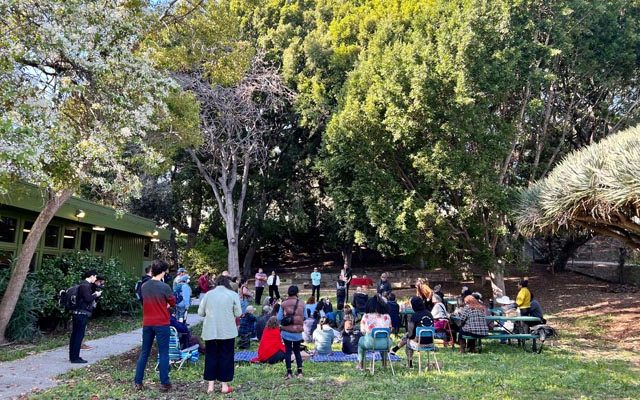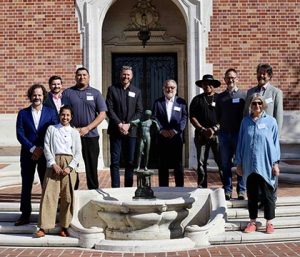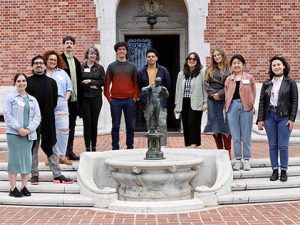
Held on February 10-11, 2023, this event was the second of a three-part conference series that comprises the 2022-23 Center & Clark Core Program. The theme of this second installation was “Ephemeral Architecture,” and speakers examined the creation, roles, and histories of impermanent structures in diverse contexts across the Americas. With sessions in the William Andrews Clark Memorial Library and Kuruvungna Springs Village & Cultural Center, the ten invited speakers gave stimulating presentations regarding how various peoples in the Americas have worked with their local ecologies to design and shape their built environments. Discussions also explored how the concept of “Ephemeral Architecture” can or should be discerned, interpreted, and valued in the context of different peoples, construction traditions, and times.

Eight of the ten speakers gave presentations at the Library. Topics included Santiago Giraldo’s discussions of archaeological remnants and impermanence in Colombian Tairona archaeology, Brendan Weaver’s study of reed mat architecture in Nasca, Peru, Kenneth Kelly’s work on Caribbean Kaz Kreole homes, and more. A dual presentation was provided by Shannon Speed (Director of the UCLA American Indian Studies Center) and Brenner Billy (a builder from the Choctaw Nation of Oklahoma), who together engaged in a thought-provoking conversation regarding the construction of a traditional Choctaw chukka, or house.
After a day and a half of indoor discussions, the conference was moved outdoors to the Kuruvungna Springs Gabrielino Tongva site. Here, President of the Gabrielino-Tongva Springs Foundation Bob Ramirez gave a walking tour of the site’s history, ecology, and reconstruction efforts. This was complemented by an interactive chukka model creation exercise held by Brenner Billy. The workshop closed at these beautiful Kuruvungna Springs, framed by this ecological restoration project and traditional constructions of Indigenous ephemeral architecture. We look forward to continuing this conference in its culminating session, “Imperialism,” which will be held on April 14–15, 2023.

For more information, please visit https://theforgottencanopy.create.fsu.edu/ or follow @theforgottencanopy on Instagram.
–Gabriel Silva Collins and Kevin Torres-Spicer, PhD students, UCLA Cotsen Institute
Top Image: Bob Ramirez, President of the Gabrielino-Tongva Springs Foundation, leads an outdoor discussion of ecological restoration and traditional ephemeral architecture construction at the Kuruvungna Village Springs & Cultural Center.

